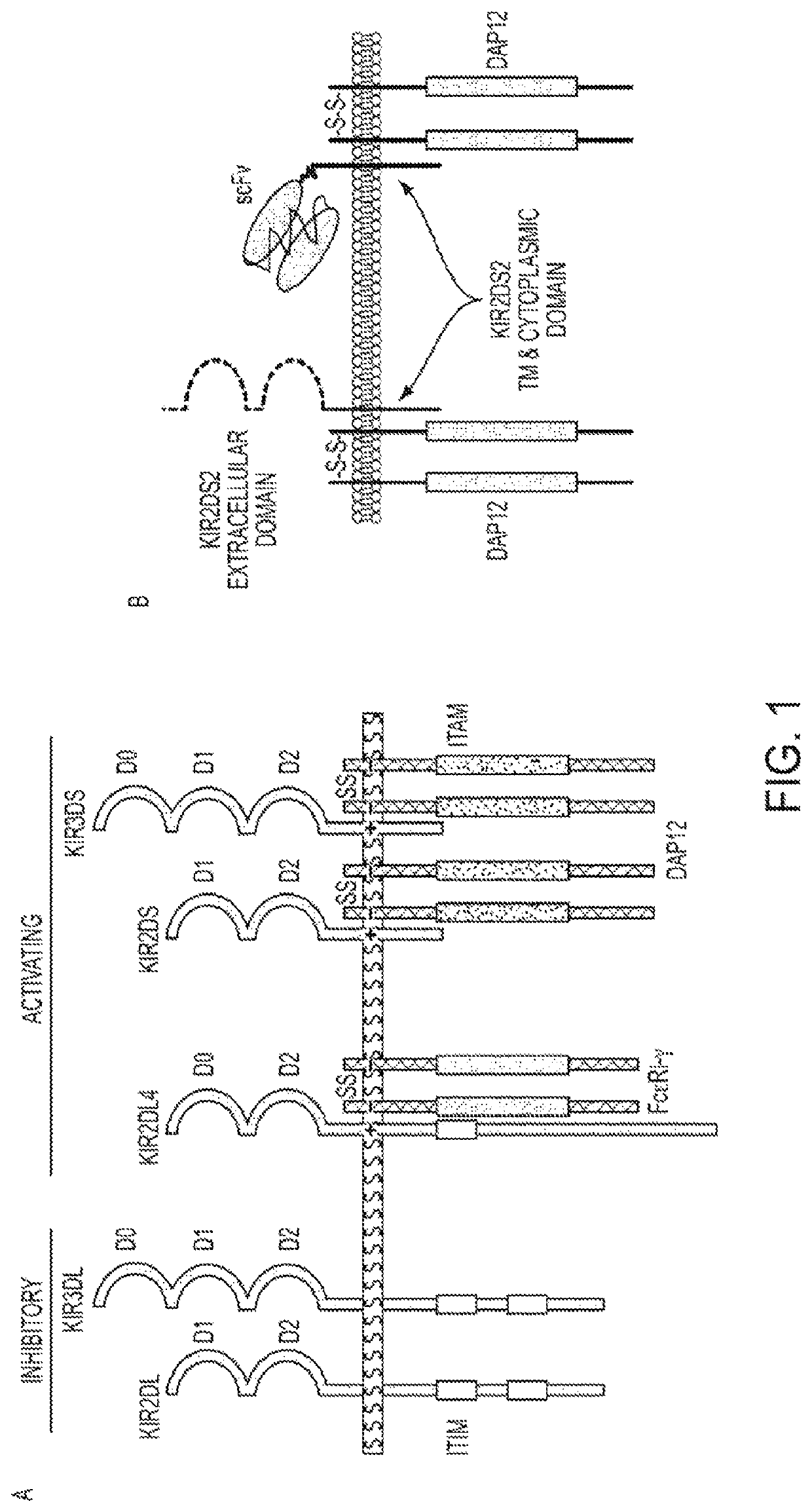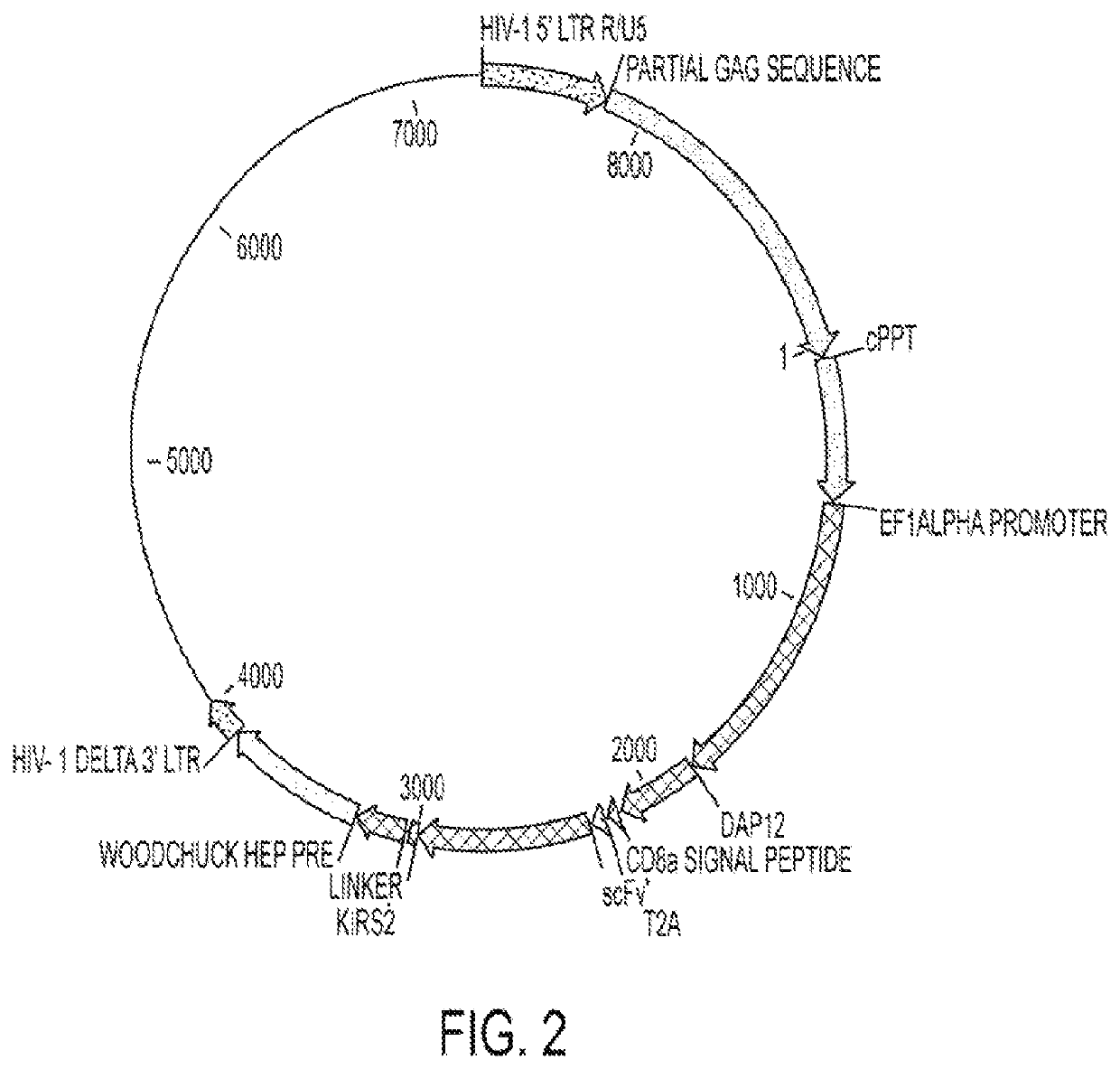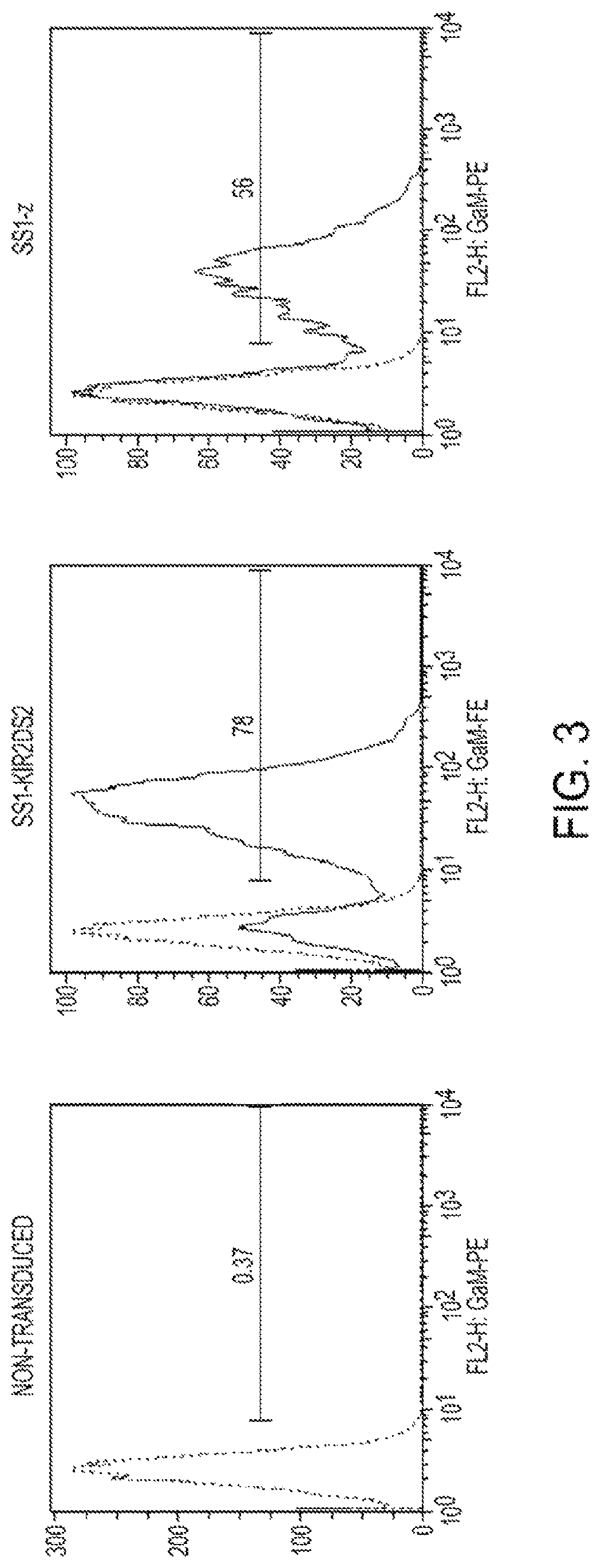Targeting cytotoxic cells with chimeric receptors for adoptive immunotherapy
a technology of cytotoxic cells and receptors, applied in the direction of genetically modified cells, immunological disorders, drug compositions, etc., can solve the problems of probable deaths, potential challenges to controlling the activity of cytotoxic cells “off-target” against normal tissues
- Summary
- Abstract
- Description
- Claims
- Application Information
AI Technical Summary
Benefits of technology
Problems solved by technology
Method used
Image
Examples
experimental examples
[1047]The invention is further described in detail by reference to the following experimental examples. These examples are provided for purposes of illustration only, and are not intended to be limiting unless otherwise specified. Thus, the invention should in no way be construed as being limited to the following examples, but rather, should be construed to encompass any and all variations which become evident as a result of the teaching provided herein.
[1048]Without further description, it is believed that one of ordinary skill in the art can, using the preceding description and the following illustrative examples, make and utilize the compounds of the present invention and practice the claimed methods. The following working examples therefore, specifically point out the preferred embodiments of the present invention, and are not to be construed as limiting in any way the remainder of the disclosure.
example 1
NK Receptors
[1049]The results presented herein demonstrate an alternative approach to constructing CARs for T cells that can be more finely regulated compared with current CAR designs. Experiments were designed to develop a novel, regulated CAR system that comprises at least two or three chimeric fusion proteins. The primary T cell activating signal and inhibitory signals are based upon naturally occurring activating and inhibitory receptors of NK cells known as killer cell immunoglobulin-like receptors (KIRs).
[1050]KIRs exist as both activating and inhibitory forms that depend upon the intracellular domain of the receptor. Activating KIRs deliver their signals through an interaction with the immunotyrosine-based activation motif (ITAM) containing membrane protein, DAP12 that is recruited by residues within the transmembrane domains of these proteins. Inhibitory KIRs bear a cytoplasmic domain that contains immunotyrosine-based inhibitory motifs (ITIMs), which abrogate the activating...
example 2
g KIR-CAR Construction and Activity
[1052]Experiments were designed to construct activating KIR-CARs based upon fusion of the anti-CD19 or anti-mesothelin scFv (SS-1) that were previously incorporated into CARs based upon the TCR-zeta cytoplasmic domain that are currently in clinical trials. The human KIR2DS2 activating KIR receptor was chosen as the initial base receptor for the actKIR-CAR. In order to deliver activating signals, the actKIR-CARs required coexpression of DAP12, which is not expressed normally in T cells. Therefore, a lentiviral vector that expresses both the actKIR-CAR with human DAP12 using a “bicistronic” gene cassette based upon the 2A ribosomal skip peptide was constructed. A diagram of the lentiviral vector is illustrated in FIG. 2. Initial studies demonstrated that the actKIR-CARs were efficiently expressed in primary human T cells and the SS1 actKIR-CAR bound to mesothelin (FIG. 3). Similar to the previously developed and published SS1 scFv CD3 zeta (SS1-ζ) CA...
PUM
| Property | Measurement | Unit |
|---|---|---|
| Fraction | aaaaa | aaaaa |
| Nucleic acid sequence | aaaaa | aaaaa |
Abstract
Description
Claims
Application Information
 Login to View More
Login to View More - R&D
- Intellectual Property
- Life Sciences
- Materials
- Tech Scout
- Unparalleled Data Quality
- Higher Quality Content
- 60% Fewer Hallucinations
Browse by: Latest US Patents, China's latest patents, Technical Efficacy Thesaurus, Application Domain, Technology Topic, Popular Technical Reports.
© 2025 PatSnap. All rights reserved.Legal|Privacy policy|Modern Slavery Act Transparency Statement|Sitemap|About US| Contact US: help@patsnap.com



